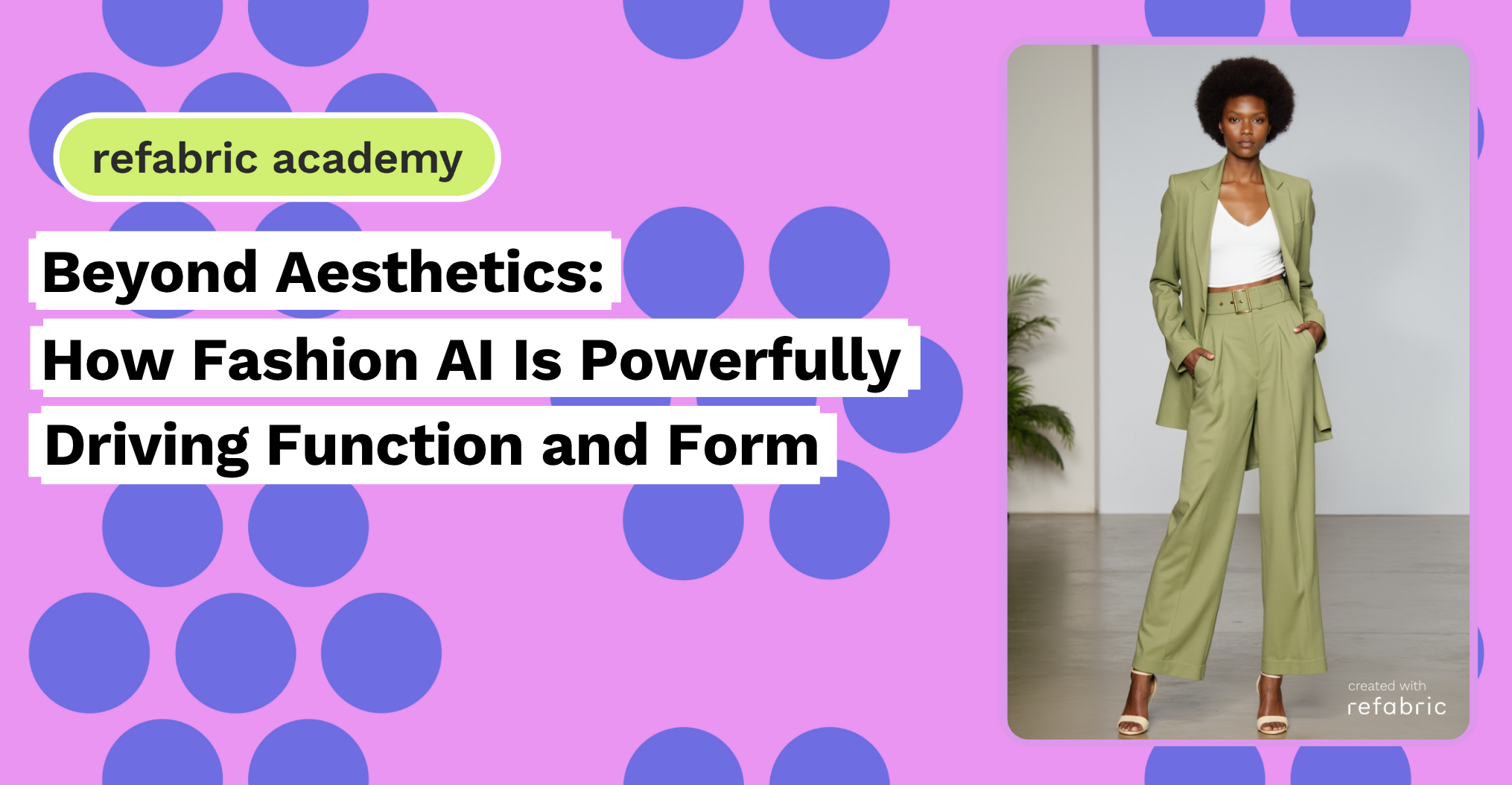Fashion AI is redefining how we think about design by integrating function as deeply as form. While fashion has historically been driven by visual appeal, today’s AI-powered tools are enabling designers to create garments that are not only beautiful but also intelligent, comfortable, and performance-ready.
Fashion AI and the Shift Toward Purposeful Design
In the past, the creative process often began with moodboards, intuition, and cultural trends. While inspiration still plays a crucial role, fashion AI adds a powerful new layer: evidence. Algorithms can process millions of data points, from customer reviews and fit returns to climate trends and social media, to offer insights into what consumers actually need from their clothes.
This has opened up new dimensions in fashion design. A winter coat, for instance, is no longer judged solely by its color or silhouette. With the help of fashion AI, designers can now consider how the coat will perform in varying climates, how easily it can be packed, and what materials will keep it lightweight yet warm.
Smarter Materials for Smarter Garments
One of the most exciting developments in fashion AI is its ability to support material innovation. Through machine learning and predictive modeling, designers can test fabrics virtually; evaluating texture, durability, breathability, and even environmental impact before a single swatch is cut.
This technology is making it easier to identify sustainable alternatives that meet the same standards of performance as traditional textiles. Want a biodegradable fabric that’s also moisture-wicking? Fashion AI can help narrow the search. Looking for an alternative to leather that won’t crack over time? AI can compare real-world wear data to recommend options that last.
Designing for the Real World
Fashion AI isn’t just a tool for the design studio, it’s a bridge to the real-life experiences of wearers. Through smart data analysis, it identifies common problems and missed opportunities in garment performance. If customers frequently complain about tight sleeves or itchy seams, AI picks up on those patterns and flags them for redesign.
This feedback loop between user and designer allows for more inclusive and thoughtful fashion. Whether it’s adjusting for different body types, skin sensitivities, or cultural preferences, fashion AI helps tailor fashion to fit people, not the other way around.
Adaptive Fashion and Wearable Tech
The future of fashion lies in adaptability. Fashion AI is playing a central role in designing clothing that responds to changing conditions, like garments that cool you down during a heatwave or adjust their fit during movement. As wearable technology advances, fashion AI will be crucial in merging aesthetics with sensors, power sources, and smart textiles.
Brands are already experimenting with pieces that monitor biometric data or adjust insulation based on the environment. What’s key is making these features seamless, both in terms of comfort and visual design. Fashion AI ensures that form and function evolve together, without one compromising the other.
Beyond the Runway: Practical Elegance
This evolution is not limited to technical or performance wear. High fashion, too, is embracing the intelligent possibilities of fashion AI. Designers can use AI to understand how a dress might move on different body types, how a neckline will sit, or how embellishments will hold up after multiple wears.
The result? Garments that are as comfortable as they are captivating. Whether it’s a suit designed for a long workday or a gown that balances glamour with wearability, fashion AI is helping designers merge beauty with practicality.
A Future Tailored for Living
As fashion AI continues to influence design thinking, the industry is moving toward a more intentional, consumer-driven future. Style will always matter, but so will breathability, washability, and ease of movement. Designers are no longer choosing between form and function; they are building with both from the start.
Fashion AI isn’t just a behind-the-scenes assistant. It’s becoming a creative partner, guiding the industry toward clothes that do more, feel better, and last longer. In a world where fashion must respond to diverse needs and global challenges, this marriage of design and intelligence is not just innovative, it’s essential.
